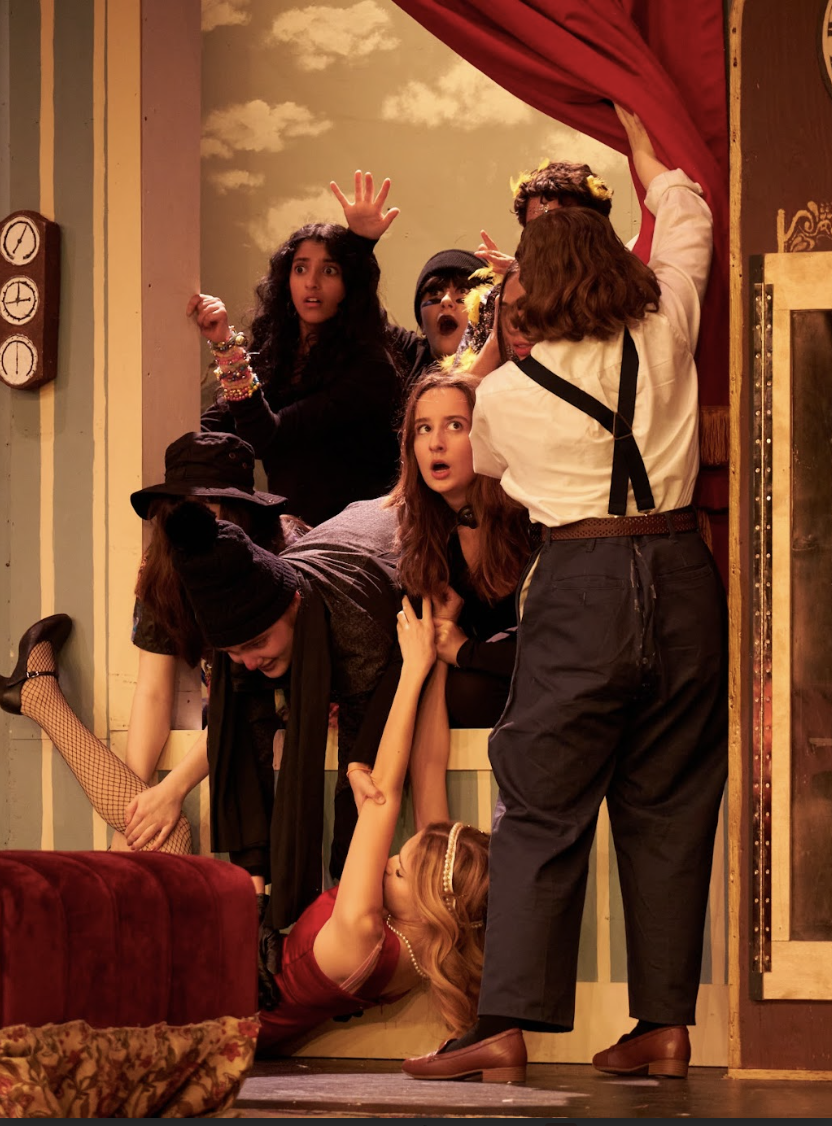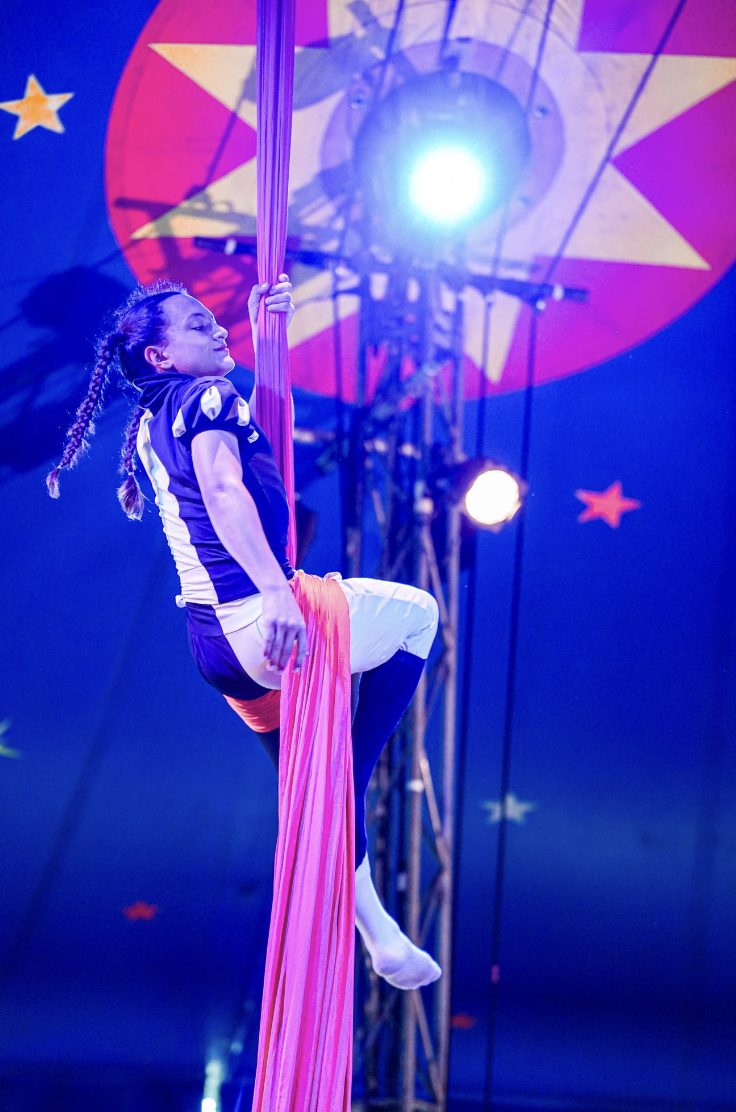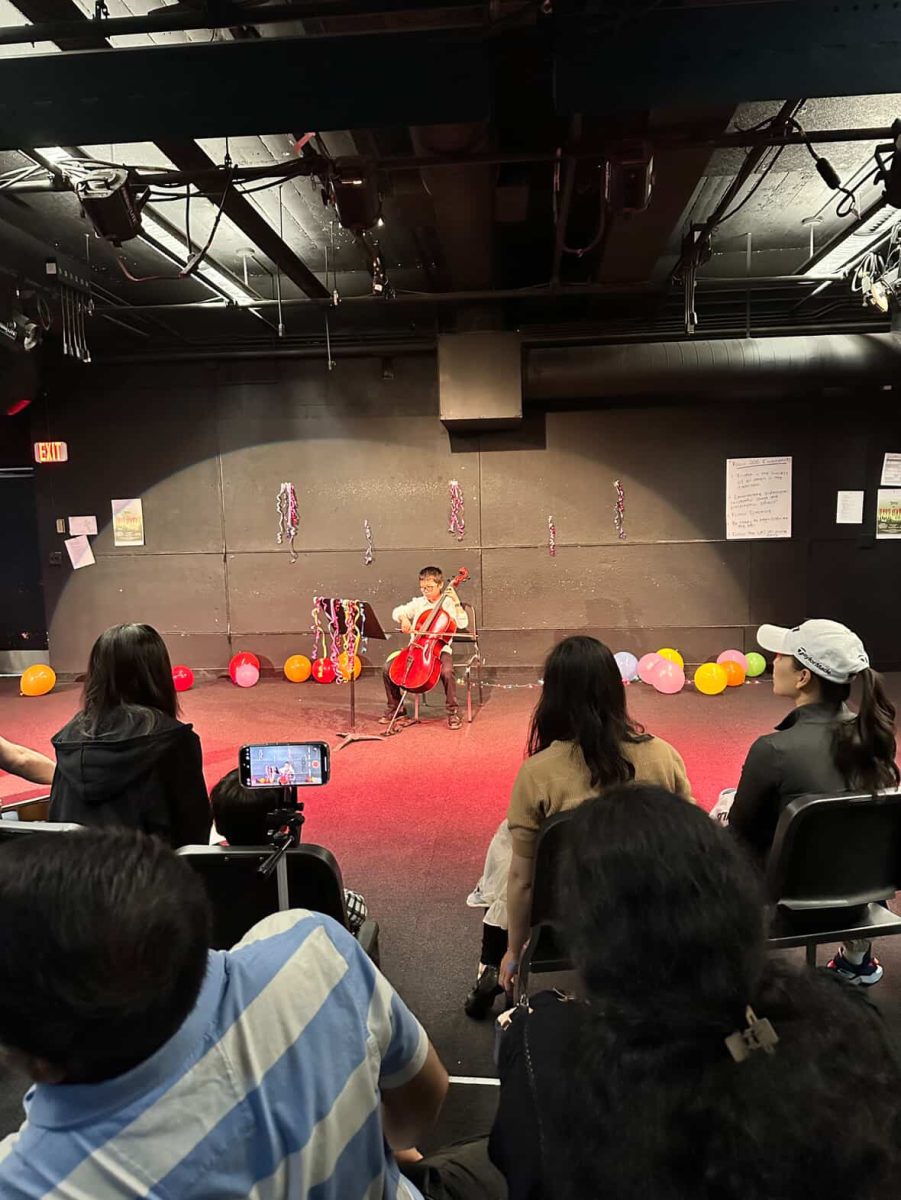On Nov. 16-18, Lexington High School presented its annual fall play: The Play That Goes Wrong: High School Edition by Henry Lewis, Henry Shields, and Jonathan Sayer.
The play follows the Cornley Drama Society as they attempt to put on a production of the fictional “Murder at Haversham Manor”—a whodunnit set in the 1920s—but despite their best attempts, everything seems to go awry. There were many difficulties that came with building a set designed to fall apart.
“It’s easy to get stuff to break, but to get that right and have it break the way you want is definitely a challenge,” Ethan McDonnell, assistant stage manager and master carpenter, said.
Leaning into the chaos has also been a highlight for other departments, such as the costumes crew, a department that works behind the scenes to design clothes and makeup looks for the show.
“I’ve never gotten to do a costume that was just funny [on its own],” Annabelle Gorry-Hines, a member of the costumes crew and senior at LHS, said.
For this production, the costumes department went all out in coming up with period-accurate looks that helped the actors and their characters shine on stage. For example, Paul-Louis Millot, a senior at LHS and one of eight actors playing a stagehand, was coated head-to-toe in glitter and neon yellow feathers in an implied glitter-bomb accident.
No matter what crazy situations the fictional characters found themselves in, having the actors create believable portrayals was an essential process of making the show come to life.
“I think people can associate acting with faking … [but] I feel like it’s a lot more than that. It’s taking your experiences and finding a way to portray them on stage [and] I think that’s a really powerful aspect of acting,” Eliza Epstein, an actor and junior at LHS, said.
Although The Play That Goes Wrong may seem more unhinged than other plays, this production was ultimately like all shows at LHS—one built on community and collaboration.
“Throughout the process, there’s been moments and times where everyone just bonds, where two people are running a scene and people are backstage talking. It’s magical and I think it’s beautiful,” Florencia Corbat, the stage manager, said.
Both on-stage and off, the importance of working together as a company and a community was key in making this performance shine. No matter where the students were—in the wings helping with the set, off-stage fixing up costumes, or in the spotlight delivering a scene—the shared efforts that made up this production are what transformed this show into a living, breathing performance.
“[It’s just] a really great way to [show] there’s more to theater than just the actors,” Elisheva Baim, the assistant stage manager and sophomore at LHS, said.




